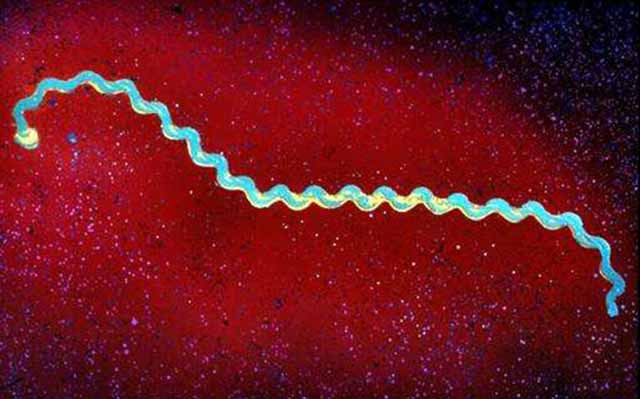There are five different groups of parasitic invaders:
Spirochetes
Spirochetes (“SPY-rō-keets”)

Spirochetes are a group comprised of six genera of bacteria in a family known as Spirochete. This bacterium is a spiral-formed organism, typically slender, which has some characteristics of protozoa. Their length can vary from about five microns (millionths of an inch) to several hundred microns, depending on the species. Under the light or electron microscope , the tight coiling that is characteristic of spirochetes is readily visible. Spirochetes are a significant health threat to humans as they multiply in the blood and lymphatic system. Both syphilis and Lyme Disease are caused by spirochetes. Treponema palladium is the cause of syphilis and Borrelia burgdorferi is the cause of Lyme disease, which can produce a chronic infection that can result in arthritis, damage to the central nervous system, and even heart failure. Borrelia burgdorferi can convert to a metabolically dormant cyst in natural environments and even in humans. The cyst form allows the bacterium to survive inhospitable conditions and to elude host immune defense mechanisms.
Sources of spirochetes include, mud, sewage, polluted water, ruminants’ (cows, sheep, goats, deer, etc.) stomachs, muscles, and oysters.
This is Part 6 of your parasite education. Go back to learn if You Could Have Parasites. To learn more, continue on to learn about Protozoa, Nemotoda (Roundworms), Cestoda (Tapeworms), and Trematoda (Flukes). Or learn How to Treat Parasitic Infections. Download my FREE Parasites Booklet.
